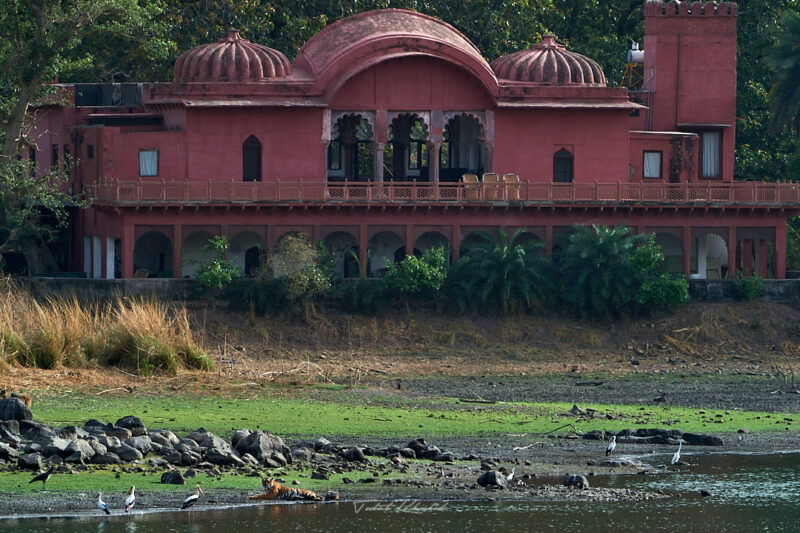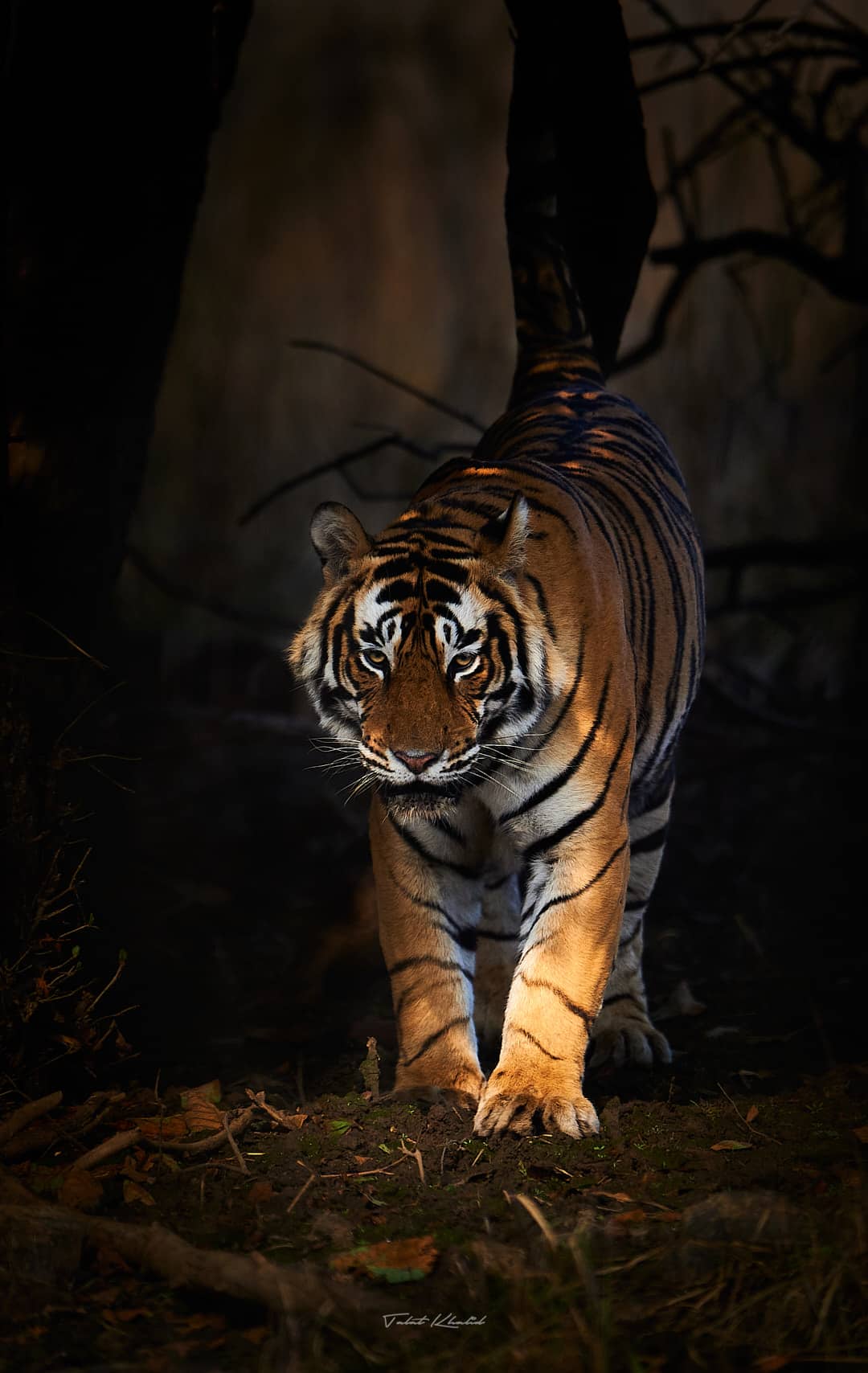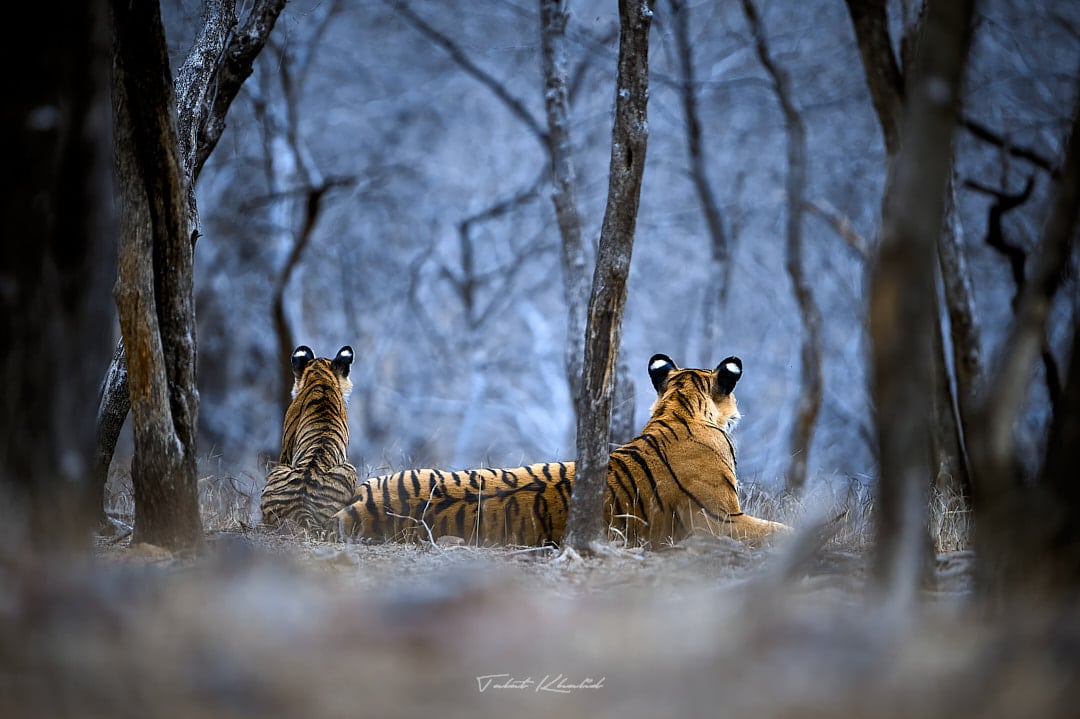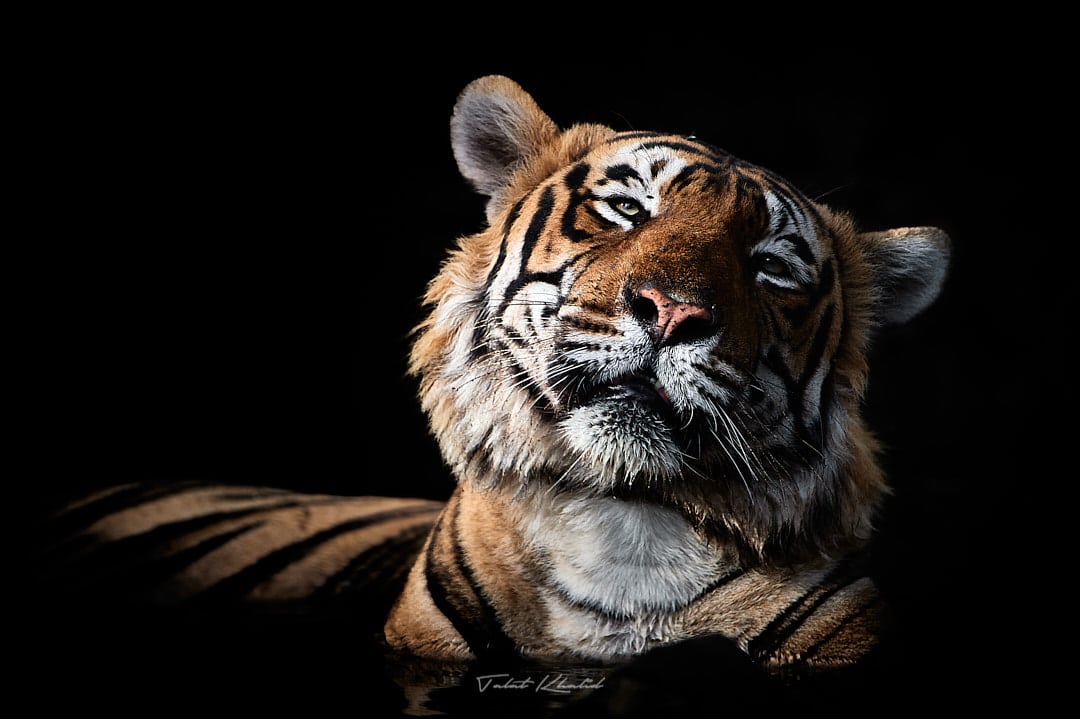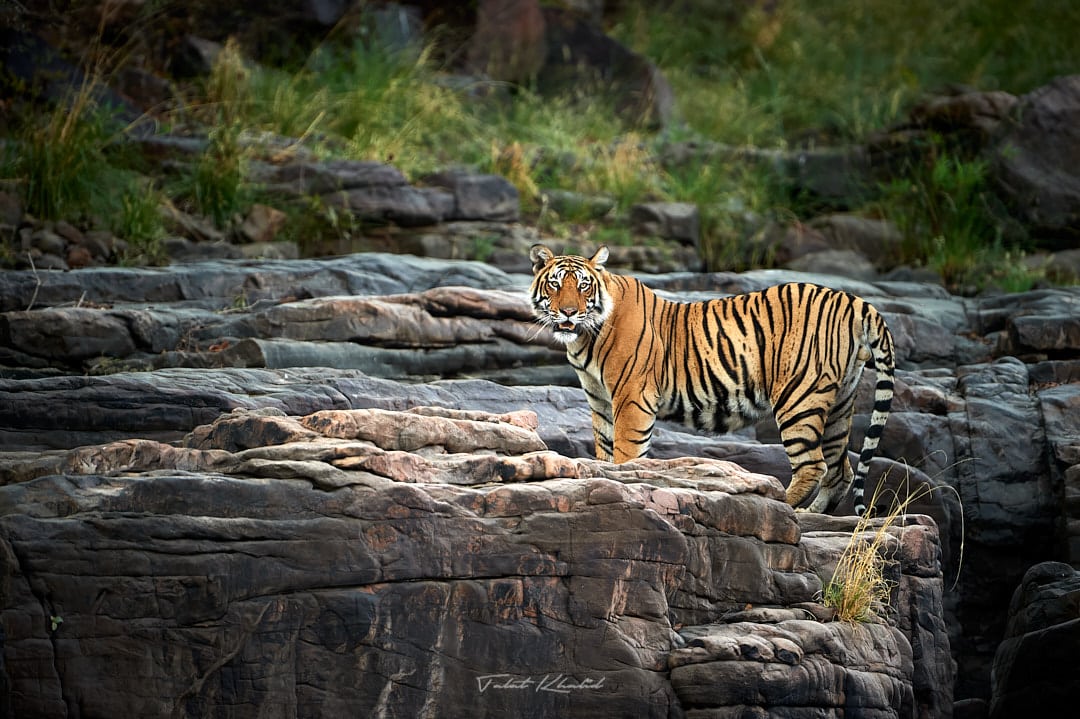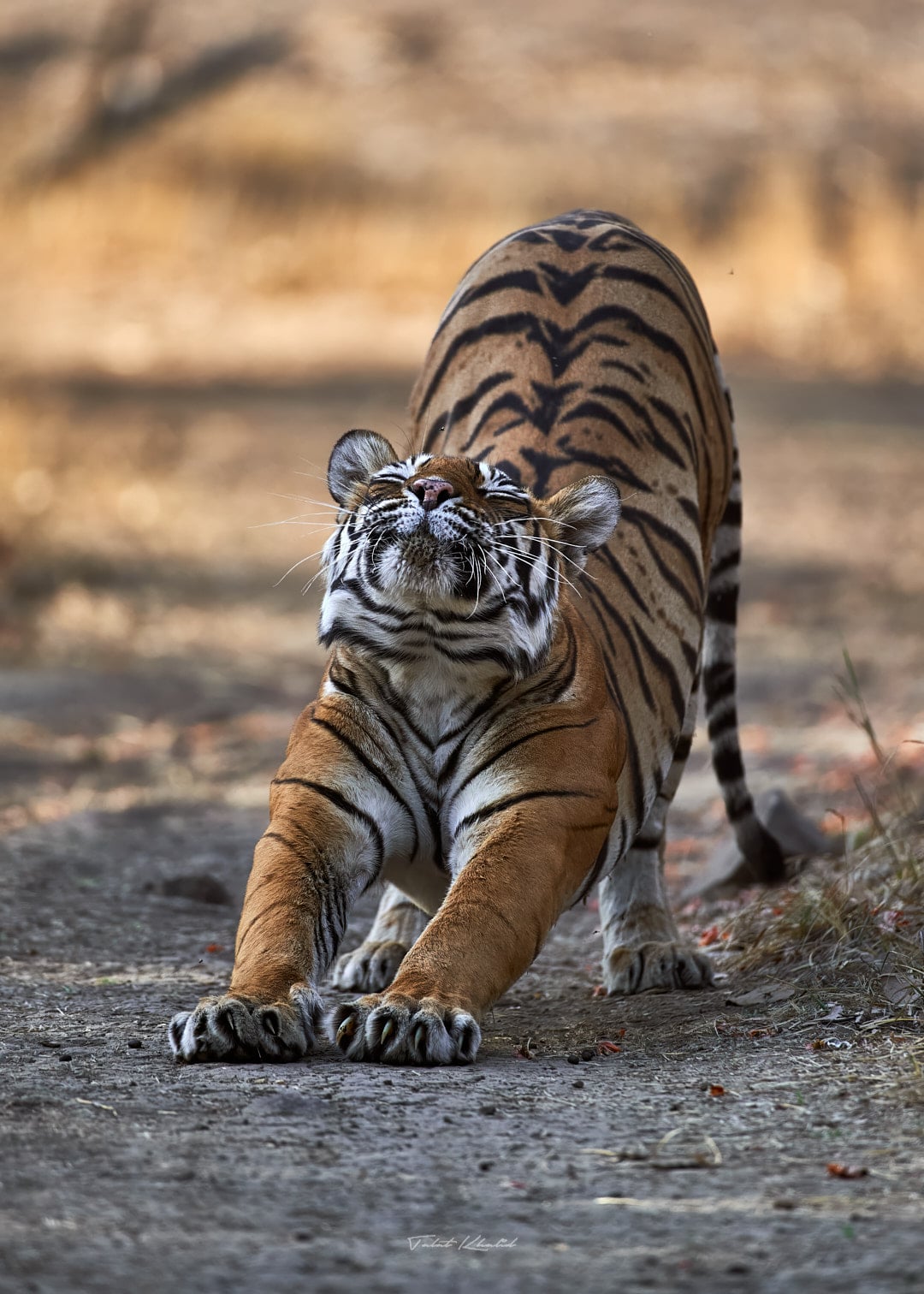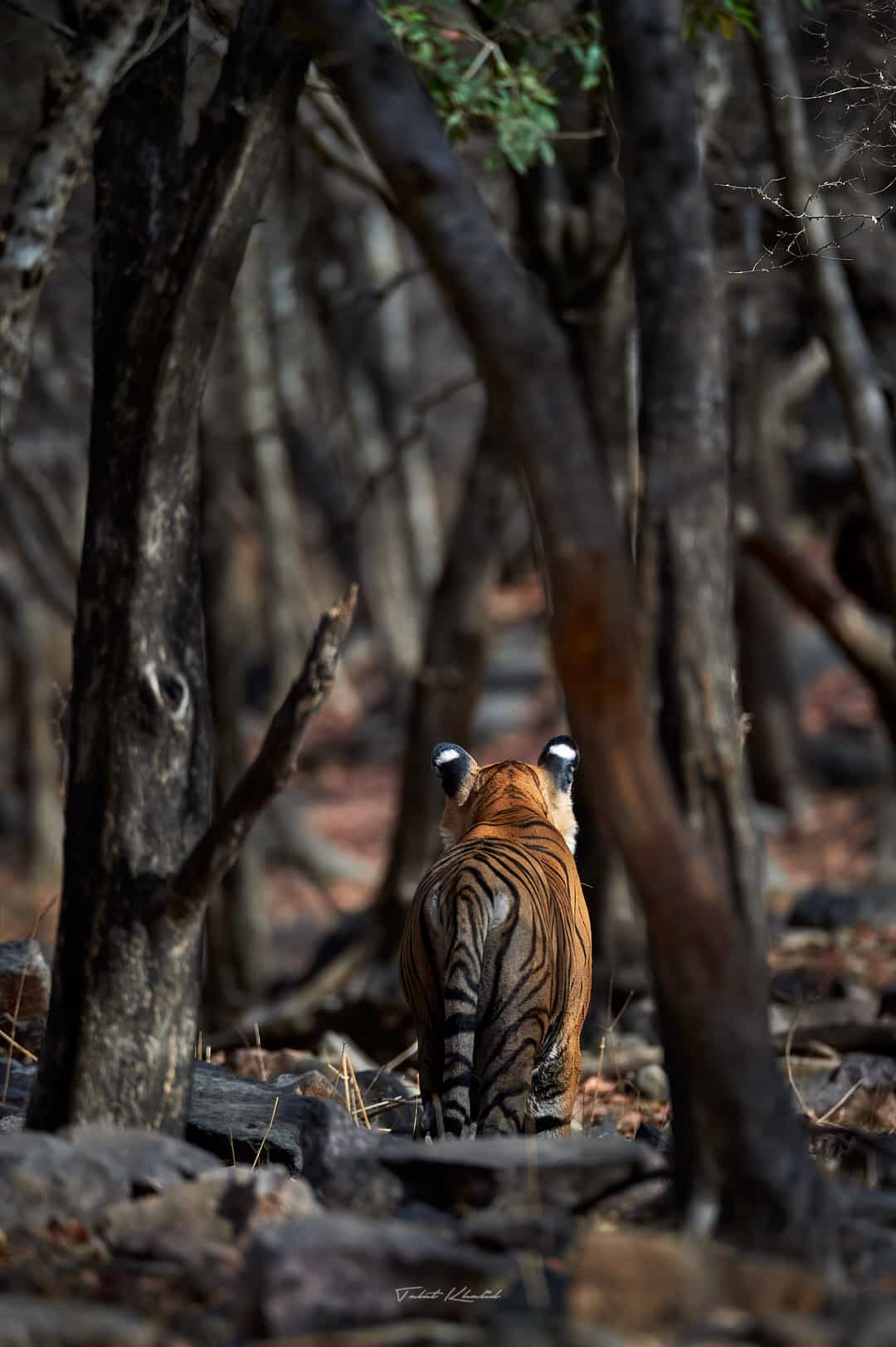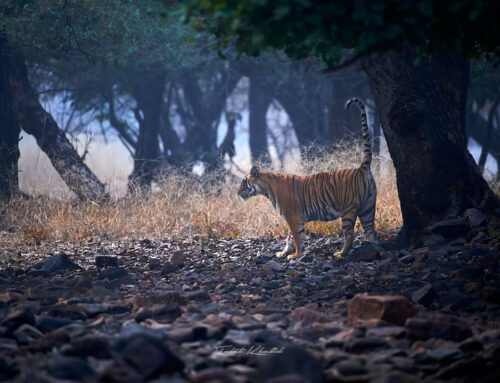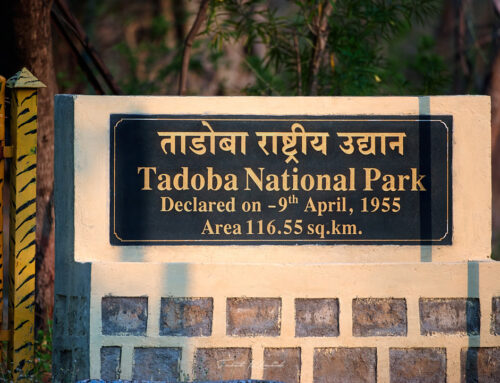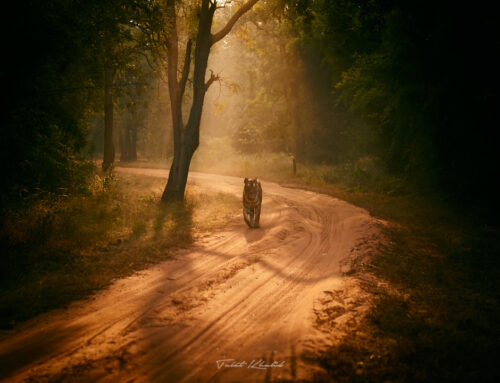Ranthambore National Park
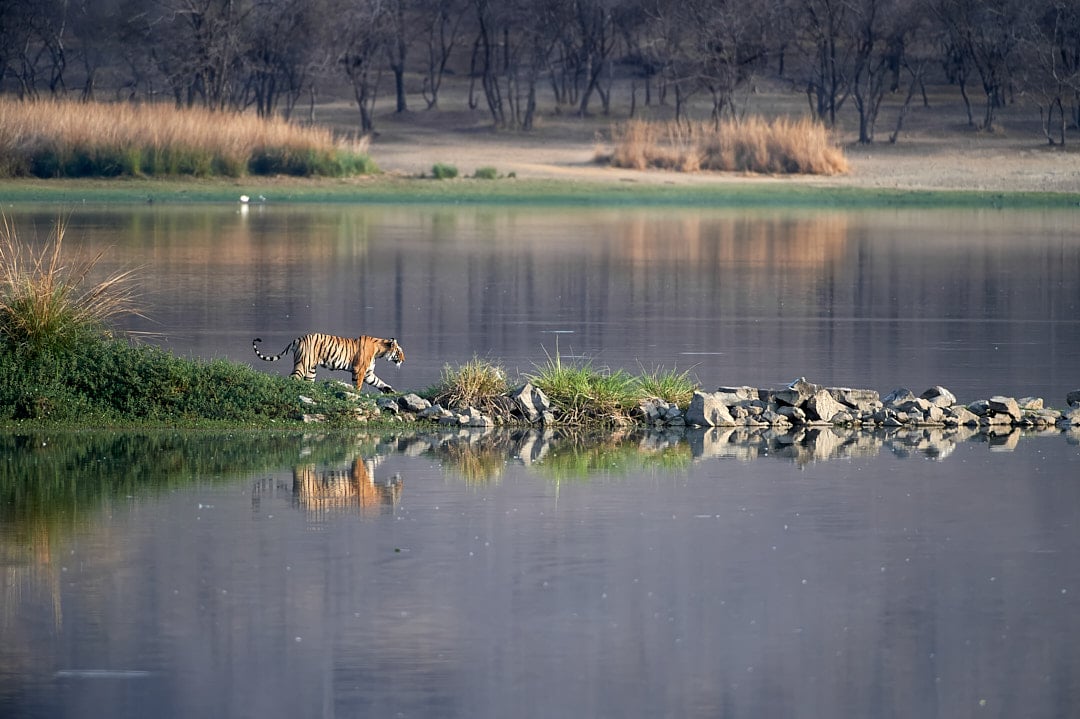
Table of contents
About Ranthambore National Park
Ranthambore National Park is one of the Finest and Most popular Tiger Reserve in India. The reserve is known for its tiger population and its varied landscape.
The Tiger Reserve was a former princely game reserve. It is located at the junction of the Aravali and Vindhya mountain ranges, near Sawai Madhopur.
Landscape Of Ranthambore
The landscape of Ranthambore Tiger Reserve is mixed, with rocky trails and a lot of hills, Remnants of old history, a 10th-century fort, and three beautiful big lakes. It has a dry and deciduous habitat. The forest is made up of the majority of Dhok trees mixed with some grasslands, meadows, and dense foliage. There are three lakes, Padam Talab (meaning Lake), Malik Talab, and Raj Bagh that make the landscape beautiful and have plenty of aquatic vegetation. There are Magar crocodiles in these lakes.
Apart from the wilderness, the ancient remains of structures built by many kings and sultans who ruled the area give it a unique ambiance of wildlife and history. When left untouched nature takes over the man-made structures and you see tigers and other wildlife roaming inside these remaining ruins of ancient buildings. This itself creates a fascinating experience when you see wildlife amidst the ancient ruins.
Great Boundary Fault
The Ranthambore Tiger Reserve is home to a significant geological feature called the “Great Boundary Fault.” This fault line marks the meeting point of the Vindhya plateau and the Aravali range. The park is also bounded by the Chambal River in the south and the Banas River in the north. The reserve is dotted with steep rocky hills, and the Ranthambhore Fort, which was built in the 10th century, adds to its landscape.
Wildlife Of Ranthambore
The tiger is the main attraction at Ranthambore, but there are also many other animals to see. Common animals are sambar deer, spotted deer, langurs, crocodiles, wild boars, leopards, and sloth bears. Ranthambore is one of the best places to see big sambar deers and sloth bears. There are also good Leopard sightings happening here. Apart from these the rare ones are caracals, hyenas, jackals, jungle cats, etc.
Ranthambore Fort
Ranthambore Fort is inside the Ranthambore National Park. It was built in the 10th century. One day of the week is especially busy, with hundreds of people from surrounding areas coming to the fort to visit the temple up the fort. The entrance to the fort is at the entrance of Zone 3.
If you are interested in Forts and Archeology you can spend an hour or two between the safaris. Just avoid the peak days of locals.
Zones In Ranthambore National Park
Ranthambore has 10 zones. Zone 1-5 are the original core zones and are usually good for tiger sightings. 6-10 zones were added later to the sanctuary as demand and tourism increased. The entry to new zones is from the old city, on the opposite side of the main core reserve. Recently 6 & 10 had regular sightings of Tigers.
- Zone 1 is the entrance to Ranthambore Tiger Reserve via Singh Dwar. Good areas to check for tigers in this zone are Tuti ka Nalla, Amreshwar Dang, Sultanpur, Peela Pani, Gada Dub, etc.
- Zone 2 is good for the Tigers. It has many water holes, and in summer easier to spot tigers. Good areas to check for tigers in this zone are Jogi Mahal, Phuta Kot, Phuta Bandha, Lahpur Tiraha, and Nal Ghati.
- Zone 3 is the most picturesque in Ranthambore Tiger Reserve. It is especially beautiful in the early morning of winter. Good areas to check for tigers in this zone are High Point, Raj Bagh, Mandook, Jogi Mahal, and Padam Talab. It is special when one of the Tigress has cubs in this area. When Arrow Head had Cubs this zone was sold out.
- Zone 4 is also a good area to see tigers. Good areas to check for tigers in this zone are Malik Talab, Lakkad Da, Adidaant, Lambi, Tamakhan, and Berda. In the evenings there is a good chance of a tiger near Malik Lake. Maybe even a chase.
- Zone 5 shares the entrance and beginning area with Zone 4, and Good areas to check for tigers in this zone are at the entrance of this zone before it splits into 4 & 5, Singhdwar, Anatpur, Jokha, Dhakda, Kachida, Baghda, and Bakola, etc.
- Zone 6 is adjacent to Zone 1. You can see tigers, Indian gazelles, and blue bulls in this zone. Good areas to check for tigers in this zone are Kala Pani, Saran Ka Pattha, Khabli, Khali Ki Baori, and Soleshwar. For a few years, this zone had become the go-to zone for regular sightings.
- Zone 7 Sighting of tigers is fewer than in other zones, Areas to check for tigers in this zone are Chidikho, Jamoda, Kushalipura, and Rajbagh Naka, etc.
- Zone 8 is similar to 7 in terms of tiger sightings, Areas to check for tigers in this zone are Balas, Kherai, Kali, Neemli Dang, Bhat, and Mahakho.
- Zone 9 is located on the banks of the Chakal River, quite far about 45 minutes away from the Tiger Reserve. It is home to aquatic birds, sloth bears, and caracals. Tiger movement is rarely seen.
- Zone 10 is a good zone and this year frequent tiger sightings happened here. There are few water holes here and the ones have become good in terms of tiger sightings here in summers. Good areas to check for tigers in this zone are Aantri, Kushalipura, Bodal, Halonda, and Banskhori etc.
Safari in Ranthambore
Safaris are conducted 2 times a day. Morning and Evening for 3-4 hrs each. Open Gypsies (4×4) and Canters (mini-open bus). The No of vehicles in each zone is limited. Permits for safari have to be booked a year in advance with the exact names of people in the vehicle and the zone for the safari. For photography Gypsies are preferred.
There used to be Full and Half Day safaris earlier. Due to reasons for the safety and well-being of Tigers and other wildlife, the park officials have stopped it for now.
Safari times are from sunrise to sunset and are decided by the forest dept.
There are no Elephant safaris in Ranthambore.
Best Time to Visit Ranthambore
The best time for frequent tiger sightings is summer. Mar to June are the best months as forest water holes shrink and there is absolutely no foliage. Visibility is high and finding tigers is much easier.
Once you have the park in the summers it is worth a visit in winter, especially in the cold months of Dec & Jan. The Mornings are just amazing especially in zone 3 the landscape near the lake is worth seeing.
Photography in Ranthambore
You have to Book a year in advance to get the best zones. The dilemma is how do you know what is best a year later. The only way is to book the known good zones. 1,2,3,4,5 and 6&10. You can do 1-5 if you get them. You should do 3 at least once as its pretty. Zone 3 is the best when cubs are there in that zone. 1,2,4,5 are also usually good. Out of 6-10, only 6 & 10 have been good in recent years.
For Photography you will need a 400-600 mm lens and good camera. Another short lens like 70-200 or similar is ideal for when wildlife is close. Bean Bag or Monopod is also a good idea.
Some chargeable services in Ranthambore worth mentioning. If you can afford get a dedicated reputed Guide for all your safaris. If your budget allows get the same driver & same vehicle.
I use to advice a few Full days or Half days if feasible however currently they are not available until forest dept decides.
For photography, a 3-5 night stay is a must. This is so you get to see the good areas and get to maximize your chances in good zones.
If you are doing just a few safaris try to get 2,3,4 if possible. This is wildlife we are talking about so the situation may change.
For more details you can Read Tiger Photography: A Guide to Capturing these Majestic Cats
Nearby Attractions
Chambal Sanctuary is close by and just 40 mins drive and is famous for its rare crocodile species known as ghariyal.
You can also visit the world-famous Bharatpur Bird Sanctuary. It’s a great place for wetland birds and also good for other birds. A Fine place to find Rock Pythons. You can also get jackals, neelgais in the area. It is about 2-3 Hrs’ drive from Ranthambore.
How to Reach
Closes Airport is Jaipur 3-4 hrs drive.
Nearest Railway Station is Sawai Madhopur and is just 15 mins drive.
Recommended Tours
Tiger Photography Tour at Ranthambore
Focus on Tigers at Bandhavgarh and Ranthambore
Conclusion
Ranthambore National Park is a Tiger’s Paradise. If one can predict the zones that will be best for tigers a year in advance, this is the best tiger park there is.
